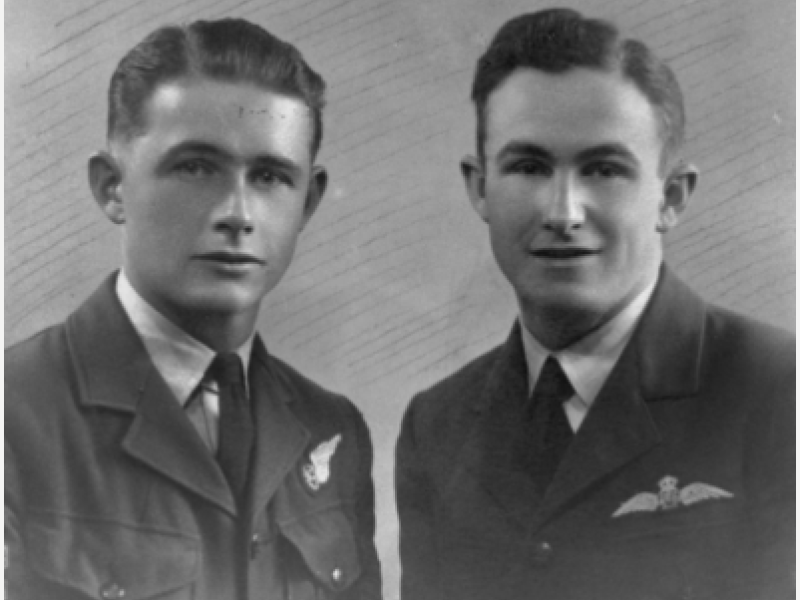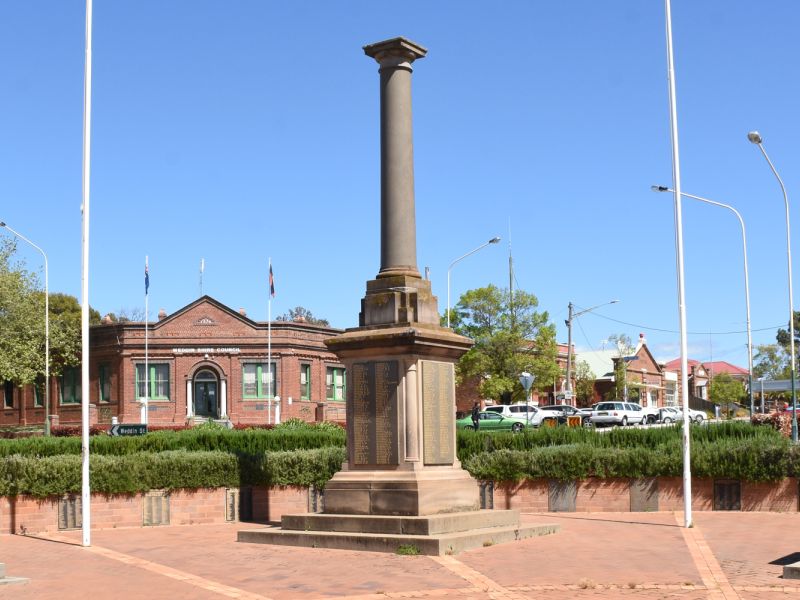Warrant Officer Reginald John Peck, 86 Squadron, RAF
Reginald Peck was born on 19 February 1920 in Manly, Sydney, one of five children to John and Phyllis Peck. Known as “Reg” to his family and friends, Peck grew up in Grenfell in central west New South Wales. He attended the Intermediate High School in Grenfell and later worked as a carpenter.
At the time of enlistment he lived at the Metropole Hotel in Katoomba in the Blue Mountains.
From December 1940, Peck served in a local militia unit, and in November 1941 he joined the Royal Australian Air Force. His younger brother Harold also served in the air force, and was awarded a Distinguished Flying Cross in 1945 with No. 622 Squadron of the RAF.
Reginald Peck trained at Bradfield Park and Temora in NSW and in August 1942, sailed for Canada as part of the Empire Air Training Scheme. The Scheme trained airmen from across the British Empire then sent them out to units. In October 1943, Peck sailed for the United Kingdom to join No. 86 Squadron of the RAF.
No. 86 was a Coastal Command Squadron which flew anti-U-boat patrols over the North Atlantic Ocean. With this unit, Peck operated from bases at Ballykelly, in Northern Ireland, Reykjavik in Iceland, and Tain in Scotland.
Peck received several promotions throughout his training and service, and on 17 November 1944, attained the rank of warrant officer.
A day after receiving this promotion, on 18 November 1944, Peck served as a wireless operator and air gunner on a night-time non-operational flight aboard Liberator aircraft BZ943. It was a training flight practising on a Leigh Light, a powerful searchlight used for spotting German U-boats at night.
The aircraft took off from the base at Tain and headed in a westerly direction. Shortly before midnight, it crashed into the ocean about 18 kilometres north-east off the coast of Banff, Scotland.
All ten of the crew – six Australian, three British, and one New Zealand airmen – were killed.
The exact cause of the crash is unknown, and despite extensive searches by aircraft and rescue boat, the body of only one crewman, Pilot Officer John Humphreys RAF, was ever found.
The commanding officer of No. 86 Squadron later wrote to Peck’s family,
“This crew was one of the very best and happiest in the unit and we here are going to feel their loss very keenly.”
Peck was 24 years old.
His name is listed in the Runnymede Memorial in Surrey, England, which records the names of over 20,000 Allied airmen of the Second World War who have no known grave.
Reginald’s brother, Pilot Officer Harold Peck was promoted to flight lieutenant and also served with the RAF. He was awarded a Distinguished Flying Cross (DFC), gazetted 23 March 1945, for 'skill and fortitude in operations against the enemy'.
David Sutton, Historian, Military History Section
Image: Studio portrait of brothers, 420786 Sergeant Reginald John Peck, RAAF (left), and 422688 Pilot Officer Harold Phillip Peck, DFC, RAAF
- Australian War Memorial https://www.awm.gov.au/collection/AWM2020.1.1.334

 Australian War Memorial
Australian War Memorial